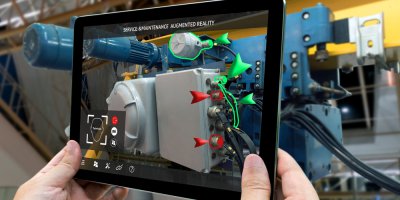
To adress customer experience gaps, some of China’s biggest e-commerce platforms are turning to AR and VR technology. Source: Shutterstock
Could AR mirrors and VR showrooms boost JD.com’s sales?
CONSUMERS often face many paint points when shopping at a brick-and-mortar store – cramped sales gallery, empty shelves, harried sales staff, long checkout lines, among others – and these things only get worse during the peak sales periods.
And however attractive the notion of shopping from the comfort of their own homes using e-commerce platforms sounds, customers still yearn to try a product, especially fashion and cosmetic products, before making the purchase.
To address these experience gaps, some of China’s biggest e-commerce platforms are turning to augmented (AR) and virtual reality (VR).
One of them, JD.com, has recently launched an AR beauty mirror which projects to consumers how they would look in different shades of lipstick or makeup, without actually wearing them.
In addition to that, plans to roll out 3D virtual fitting rooms where consumers could “try-on” clothes, is also in the pipelines.
“Shoppers have time limits, and they can only make a decision after trying on several outfits or make-up products,” Zhao Gang, who heads JD.com’s virtual reality and augmented reality development, said in a recent media interview.
While admitting to the fact that the AR-enabled beauty mirrors and virtual fitting rooms may not completely replace the physical experience of trying on different clothing – something he refers to as a ‘world-class difficulty’.
Nevertheless, Zhao believes that the new features “greatly improve efficiency.”
Technology to address the experience gap
For many brick-and-mortar retailers who are struggling to attract foot traffic to their stores as well as facing increasing costs of rent and labor, these technologies which are capable of reducing fitting room lines, and increase conversion rates, could be great.
On the other hand, e-commerce companies could also leverage the techs to close the customer experience gap, by merging the convenience of online shopping, while at the same time, providing a tactile retail experience.
Meanwhile, China’s other e-commerce giant, Alibaba has also stepped up efforts to enhance services to its customers, by combining retail with digitally enhanced reality.
The company recently invested in a VR startup Ordre which showcases designer items in the online showroom.
According to one estimate by CCS Insight, the AR and VR technology market is estimated to worth up to US$1.8 billion this year.
“Enterprise adoption of VR and AR remains an important element and has encouraging potential, read the report, but added that it might “take many years to deliver meaningful volumes of sales.”
It is still unclear how these technologies would be received by shoppers or its eventual effect on e-commerce sales, which has been slow in recent times.
Furthermore, physical store and mall operators are also looking to increasingly integrate interactive technologies to enhance the customer experience to get footfalls back into the stores.
READ MORE
- Aviation giant Airbus turns to chatbots to engage top talent
- In the digital economy, MoneyGram focuses on getting the basics right
- How FedEx uses technology to delight customers in the digital era
- FedEx Express/Ground collaboration will improve last-mile delivery
- Growth is fabulous: Why Foodpanda’s app and team are growing rapidly






